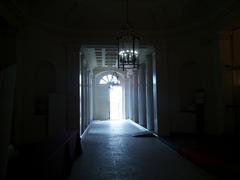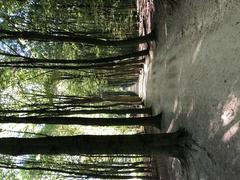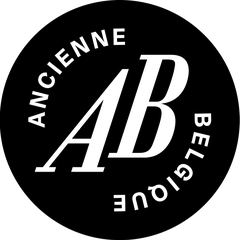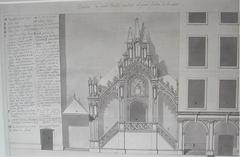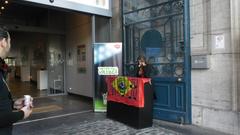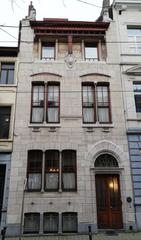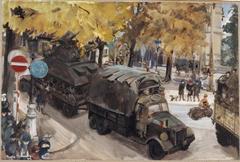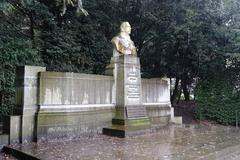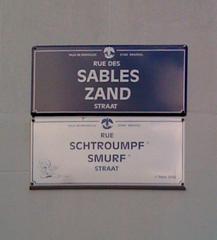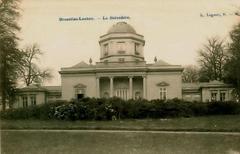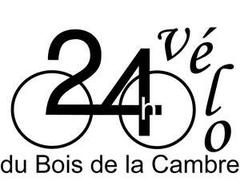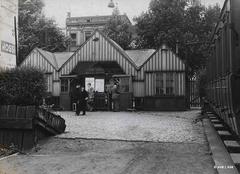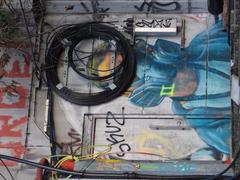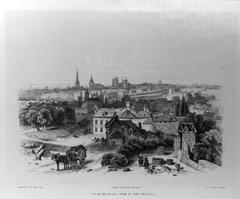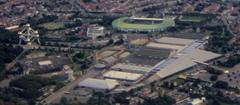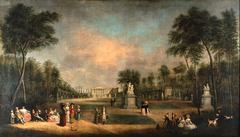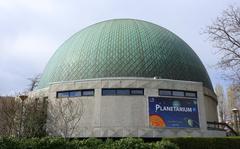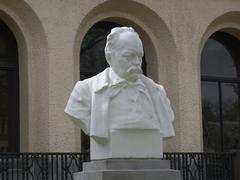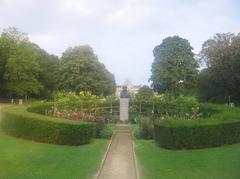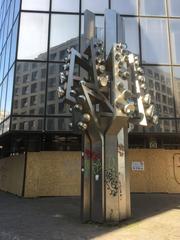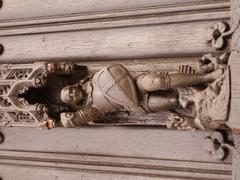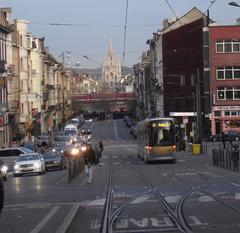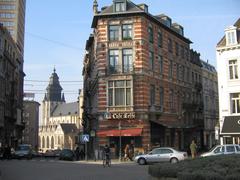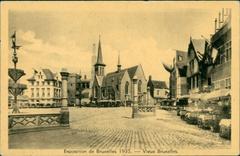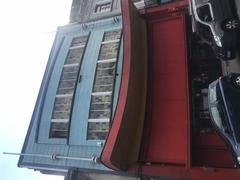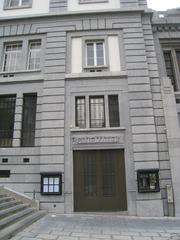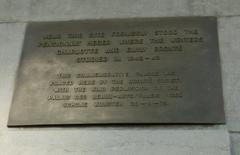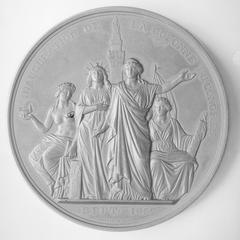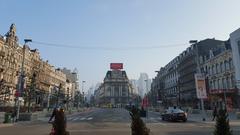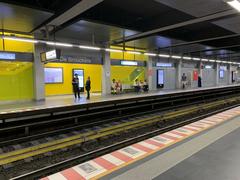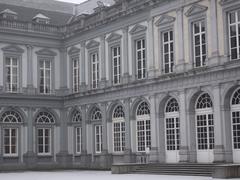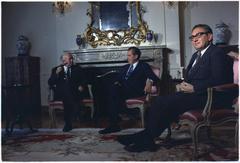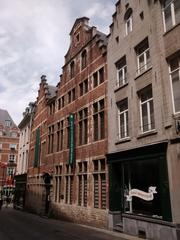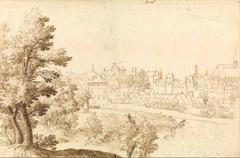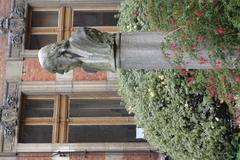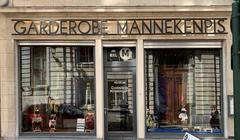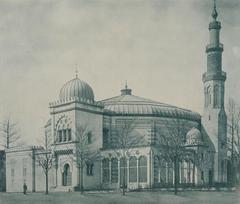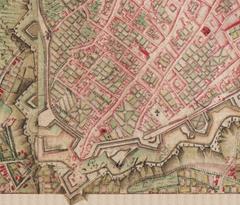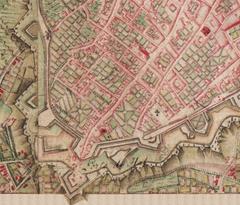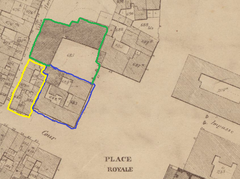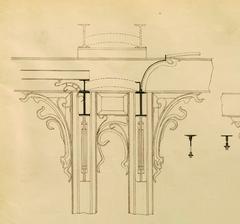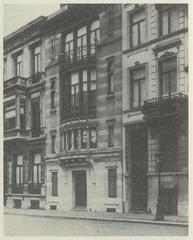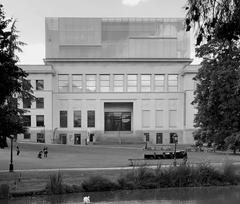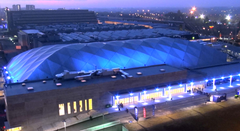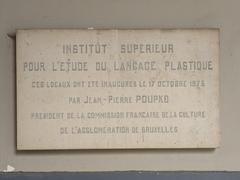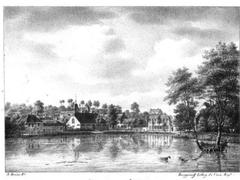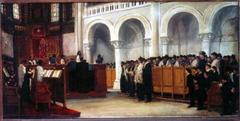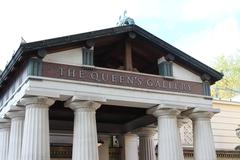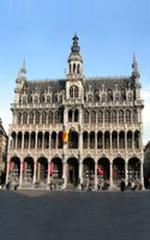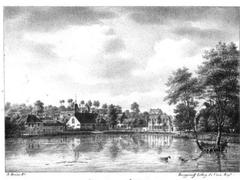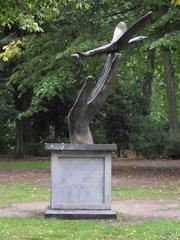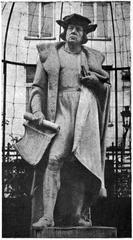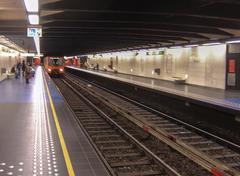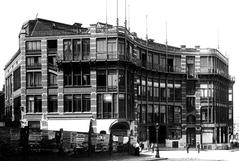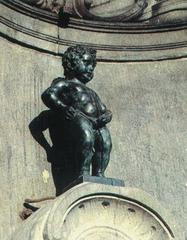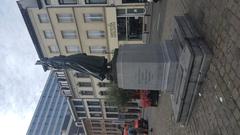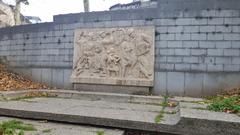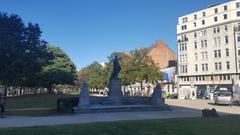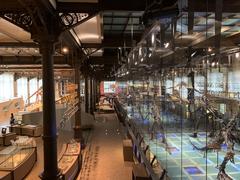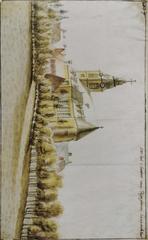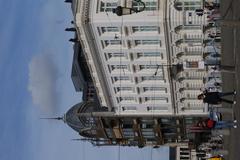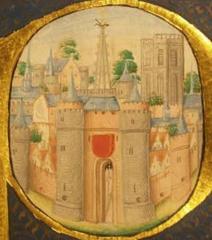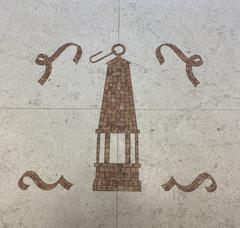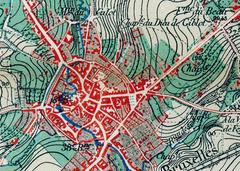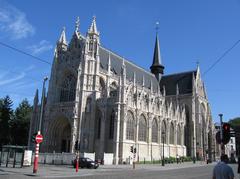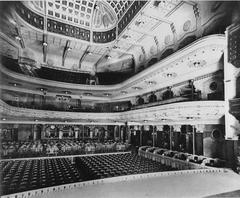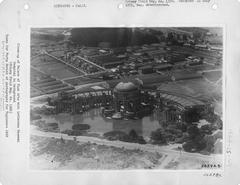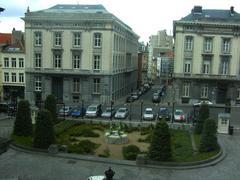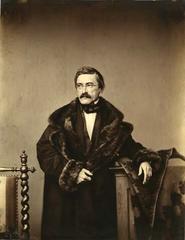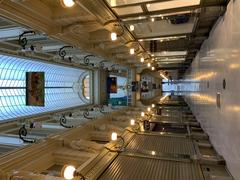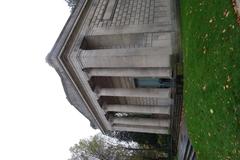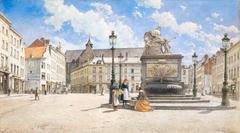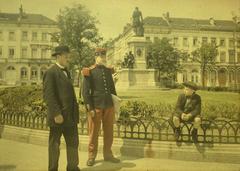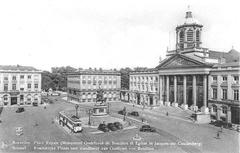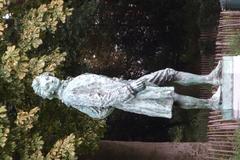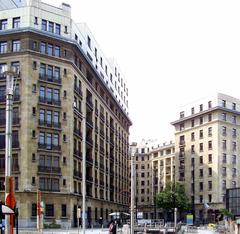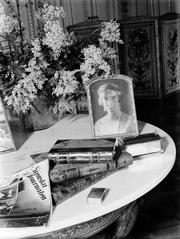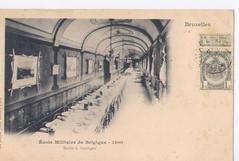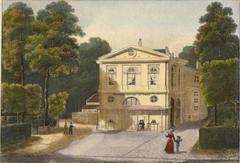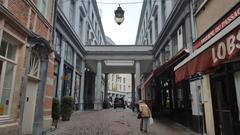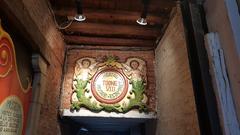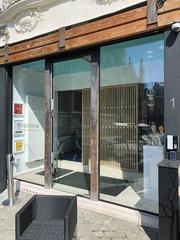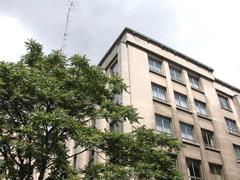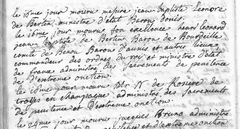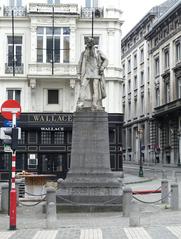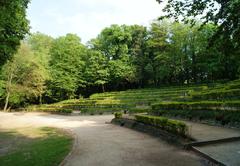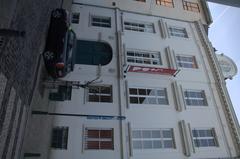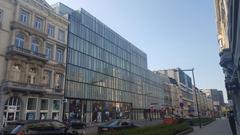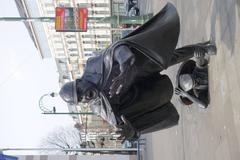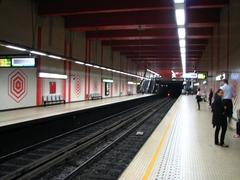Guide to Visiting the Musée Magritte Museum
Date: 18/07/2024
Introduction
The Musée Magritte Museum, located in the heart of Brussels, Belgium, is a cultural landmark that pays homage to one of the most influential surrealist artists of the 20th century, René Magritte. Nestled within the historical Hôtel Altenloh on Place Royale, the museum opened its doors in 2009 and has since become a beacon for art enthusiasts globally. With a collection boasting over 200 of Magritte’s works, including paintings, drawings, sculptures, and archival materials, the museum offers a comprehensive exploration of his artistic journey and legacy. This guide aims to provide an in-depth look at the museum’s history, collections, visitor information, and practical tips to ensure an enriching experience. Whether you are an avid art lover or a curious traveler, the Musée Magritte Museum promises a captivating dive into the surreal world of Magritte. (source)
Table of Contents
- Introduction
- History and Significance
- Collections and Exhibitions
- Visitor Information
- Travel Tips and Nearby Attractions
- Special Events and Photographic Spots
- FAQ
- Conclusion
History and Significance
The Making of a Museum
The genesis of the Musée Magritte Museum can be traced back to 1992, when the establishment of a museum dedicated to Magritte’s works was first proposed. The Royal Museums of Fine Arts of Belgium, already home to a significant collection of Magritte’s paintings, spearheaded this initiative. The Hôtel Altenloh, with its neoclassical grandeur and prime location on Place Royale, was chosen as the ideal setting for this ambitious project.
After extensive renovations and meticulous planning, the Musée Magritte Museum opened its doors to the public on June 2, 2009. The museum’s inauguration marked a momentous occasion in the art world, bringing together the most comprehensive collection of Magritte’s works under one roof.
A Surrealist Haven
The Musée Magritte Museum is not merely a repository of Magritte’s paintings; it is a meticulously curated space that invites visitors to delve into the artist’s enigmatic world. The museum’s collection, spanning over 200 paintings, drawings, sculptures, and archival materials, offers an unparalleled glimpse into Magritte’s artistic trajectory.
From his early impressionistic works to his iconic surrealist masterpieces, the museum showcases the breadth and depth of Magritte’s artistic genius. Visitors can trace the evolution of his signature motifs, such as the bowler-hatted men, floating apples, and obscured faces, which have become synonymous with surrealist art.
The Significance of Magritte’s Legacy
René Magritte’s impact on the art world extends far beyond the realm of surrealism. His thought-provoking imagery and exploration of perception have left an indelible mark on contemporary art, influencing generations of artists, designers, and filmmakers. Magritte’s works challenged conventional notions of reality, inviting viewers to question their perceptions and embrace the ambiguity of the world around them. His paintings, often characterized by their dreamlike quality and unexpected juxtapositions, continue to captivate and intrigue audiences worldwide.
A Global Destination for Art Enthusiasts
Since its opening, the Musée Magritte Museum has become a must-visit destination for art enthusiasts from around the globe. The museum’s central location in Brussels, a city renowned for its art and culture, makes it easily accessible to visitors. The Musée Magritte Museum stands as a testament to the enduring power of René Magritte’s art. Its comprehensive collection, insightful exhibitions, and commitment to education ensure that Magritte’s legacy continues to thrive, captivating and inspiring generations to come.
Collections and Exhibitions
Permanent Collection
The Musée Magritte Museum houses the world’s largest collection of Magritte’s works, with over 200 paintings, drawings, sculptures, and photographs. Key pieces from different periods of his artistic journey include:
- Early Works (1920s): This period showcases Magritte’s early influences, including Cubism and Futurism. Notable works include “The Lost Jockey” (1926) and “The Menaced Assassin” (1927).
- Surrealist Breakthrough (1930s): This pivotal decade saw Magritte’s signature surrealist style emerge. Iconic paintings like “The Human Condition” (1933), “Golconda” (1953), and “The Son of Man” (1964) exemplify his exploration of perception and reality.
- Post-War Period (1940s-1950s): Magritte experimented with different styles and techniques during this time, including Impressionism and Fauvism. “The Empire of Light” (1954) and “The Lovers II” (1928) are notable examples from this period.
- Final Years (1960s): Magritte continued to refine his surrealist vocabulary in his later years, creating thought-provoking works like “The Blank Signature” (1965) and “The Domain of Arnheim” (1962).
Beyond paintings, the museum displays Magritte’s lesser-known works, including:
- Sculptures: Magritte’s sculptures, like “The Rape” (1934) and “The Pleasant Truth” (1966), translate his surrealist imagery into three dimensions.
- Photographs and Films: The museum houses a collection of Magritte’s photographs and experimental films, offering insights into his creative process and personal life.
- Archival Materials: Visitors can explore Magritte’s personal letters, sketches, and documents, providing a deeper understanding of his artistic intentions and inspirations.
Rotating Exhibitions
In addition to the permanent collection, the Musée Magritte Museum hosts temporary exhibitions that complement and expand upon Magritte’s oeuvre. These exhibitions often feature:
- Thematic Explorations: Focused on specific themes or motifs within Magritte’s work, such as his use of symbols, his exploration of language, or his engagement with popular culture.
- Comparative Perspectives: Juxtaposing Magritte’s work with that of his contemporaries or artists from different periods, highlighting his influences and impact on art history.
- Contemporary Responses: Showcasing works by contemporary artists who engage with Magritte’s legacy, demonstrating his enduring influence on contemporary art.
These rotating exhibitions ensure that each visit to the Musée Magritte Museum offers a fresh perspective on the artist’s work, making it a dynamic and engaging destination for art enthusiasts.
Visitor Information
Visiting Hours
The Musée Magritte Museum is open from Tuesday to Sunday, 10 AM to 5 PM. The museum is closed on Mondays and certain public holidays. It’s advisable to check the official website for any changes in opening hours.
Ticket Prices
Tickets for the Musée Magritte Museum are priced as follows:
- General Admission: €10
- Seniors (65+): €8
- Students: €5
- Children under 12: Free
Group discounts and combined tickets with other Royal Museums are available. Tickets can be purchased online or at the museum’s ticket counter.
Guided Tours
Guided tours are available for those who wish to gain deeper insights into Magritte’s works. Tours can be booked in advance through the museum’s official website or at the information desk upon arrival.
Accessibility
The Musée Magritte Museum is committed to being accessible to all visitors. The museum is equipped with elevators and ramps to accommodate visitors with mobility issues. Additional support services are available upon request.
Travel Tips and Nearby Attractions
When visiting the Musée Magritte Museum, consider exploring other nearby attractions in Brussels. The Royal Palace, the Museum of Musical Instruments, and the historic Grand Place are all within walking distance. For a full day of cultural immersion, these sites offer a comprehensive experience of Brussels’ rich heritage.
Special Events and Photographic Spots
The museum frequently hosts special events, including temporary exhibitions, lectures, and workshops. Be sure to check the museum’s event calendar for the latest updates. Photographers will find numerous spots within the museum that offer picturesque backdrops, particularly in the galleries featuring Magritte’s most iconic works.
FAQ
Q: What are the visiting hours for Musée Magritte Museum?
A: The museum is open from Tuesday to Sunday, 10 AM to 5 PM, and closed on Mondays and certain public holidays.
Q: How much are tickets for Musée Magritte Museum?
A: General Admission is €10, Seniors (65+) are €8, Students are €5, and Children under 12 are free. Group discounts and combined tickets are also available.
Q: Are guided tours available at the Musée Magritte Museum?
A: Yes, guided tours are available and can be booked in advance or at the information desk upon arrival.
Q: Is the Musée Magritte Museum accessible to visitors with disabilities?
A: Yes, the museum is equipped with elevators and ramps, and additional support services are available upon request.
Conclusion
The Musée Magritte Museum stands as a testament to the enduring power of René Magritte’s art. Its comprehensive collection, insightful exhibitions, and commitment to education ensure that Magritte’s legacy continues to thrive, captivating and inspiring generations to come. Whether you’re an art aficionado or a casual visitor, the Musée Magritte Museum offers an enriching experience that highlights the surreal beauty of Magritte’s genius.
For more information, visit the official Musée Magritte Museum website and plan your visit today!
References
- Discover the Musée Magritte Museum - History, Visiting Hours, and Tickets in Brussels, 2024, Author https://www.musee-magritte-museum.be
- Exploring the Musée Magritte Museum - Collections, Exhibitions, and Visitor Information, 2024, Author https://www.musee-magritte-museum.be
- Visiting the Musée Magritte Museum - Hours, Tickets, and Tips for an Unforgettable Experience in Brussels, 2024, Author https://www.musee-magritte-museum.be

